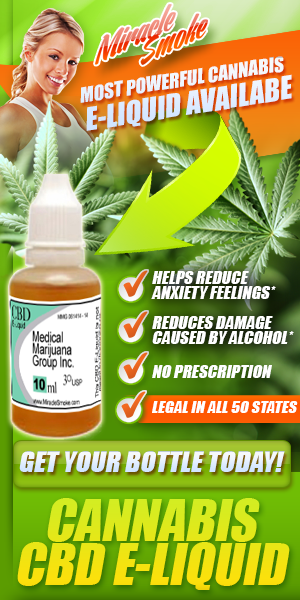
Staying healthy is super important for everybody, regardless of age, race, gender or socioeconomic status. Everyone deserves the right to health care, and nobody should be turned away or put into extreme debt just to take care of themselves or their families. This extends not only to regular health care and hospital visits but also specialized treatment such as drug rehabilitation.
With so many people affected by drug abuse and addiction in the U.S.—20.2 million adults had a substance use disorder in 2014—it’s more important now than ever to understand how drug rehabilitation centers save lives. Let’s take a look at five interesting facts about this sector of the healthcare industry:
Illicit Drugs, Deadly Substances
Unfortunately, it’s very easy for the general public to develop misconceptions surrounding the massive problem of drug abuse and addiction. Over the years, so many myths and preconceived notions have perpetrated stigmas and judgmental attitudes toward those who use drugs. In many cases, this results in negative attitudes and ideas around drug abuse and subsequent rehabilitation.
However, substance abuse rehabilitation centers help so many people every year as they battle their life-threatening addictions. According to the National Institute on Drug Abuse, drug use combined with alcohol and tobacco abuse costs our country more than $740 billion per year, due to expenses related to crime, health care and lost work productivity.
Although drug rehabilitation is certainly part of these healthcare costs, it’s very likely that this figure would be much higher if it wasn’t for these resources trying to make a positive change. Drug rehabilitation centers make a huge difference by trying their absolute best to get struggling users off of their drugs of choice and help them return to a better lifestyle where they can be functioning members of society.
Cross-country Resource
Drug abuse is a heartbreaking problem that touches every corner of the country. No town, city, state or region has been left untouched, with the smallest communities and the largest metropolitan areas all affected. This rising problem, which has been growing alarmingly over the past century, has led to the rapid increase in drug rehabilitation centers across the country.
A few decades ago, most rehab centers would be centered in large areas with lots of people, but now there are more suburban and rural options for people to choose from. That’s because drugs are no longer just a “city thing,” as they’re wreaking havoc on small, close-knit towns as well.
There are now more than 14,000 rehab centers in America that are actively serving patients and helping them return to the best version of themselves, without the harmful effects of drugs and alcohol.
Health Insurance Coverage
It makes sense that health insurance covers regular health care needs like checkups and hospital visits, but what about drug addiction treatment and rehabilitation? Does United Healthcare cover drug rehab, or does it leave addicts and their families scrambling for the funds to pay for treatment?
Luckily for many Americans insured through United Healthcare or other leading providers, drug rehabilitation services are covered, up to a certain amount at least. This means that those suffering from drug dependence can get the help they need with the assistance of their healthcare provider. Rehabilitation and treatment itself can often be very expensive, so it’s important that more and more people are presented with health insurance options that truly help them in these sad situations.
Without health insurance, people who were unable to pay for drug treatment when they needed it would most likely fall through the cracks, and that would be a horrible thing for their families and our society as a whole. Having the support of a health insurance provider can mean the world to a person overcome with drug problems.
However, for those Americans who don’t have health insurance coverage all year long—28.1 million in 2016—a sudden need for emergency medical attention following an overdose or complication, as well as trips to rehab, can seem out of reach.
Teen Treatment Options
Drug use has been a concern for adolescents and teenagers for a very long time. This period of life comes with a lot of physical, mental and emotional changes and challenges. Whether they fall victim to peer pressure or are running away from past hurt and trauma, teenagers who become involved in drug use are at a high risk of serious injury or death.
That’s due in large part to the fact that many of them are beginning to drive or are likely to overdose because they just don’t know, realize or care about how dangerous drugs are. Thankfully, many drug rehabilitation centers across the country focus on this age group, which gives a lot of struggling teens the chance to get back on track and live happy and healthy lives.
In a lot of situations, teens are dealing with not only drug abuse but also a co-occurring disorder such as depression, anxiety or PTSD. Although annually there are approximately 1.5 million teenagers who have a substance use disorder, only around 111,000 will get the help they need. Many health advocates and drug rehab workers are trying to increase these numbers and introduce more teens to the help they so badly need.
Success Stories
Nearly 200 Americans died every day last year due to drug use, so the role of drug rehabilitation treatment centers can be understated. Although the number of other drug-related deaths is truly terrifying, it’s important to remember that people often recover from drug and alcohol addiction, so long as they receive specialized treatment.
Drug rehabilitation centers provide much-needed services including behavioral therapy, counseling, medication, case management and life coaching. All of these things play a critical role in preparing former drug addicts to return to the outside world and make better choices that protect their health and future, rather than harming it.
There are plenty of inspiring success stories of people who came back from the brink of drug-related death to make much better choices and enjoy healthy accomplishments in their professional and personal lives.







